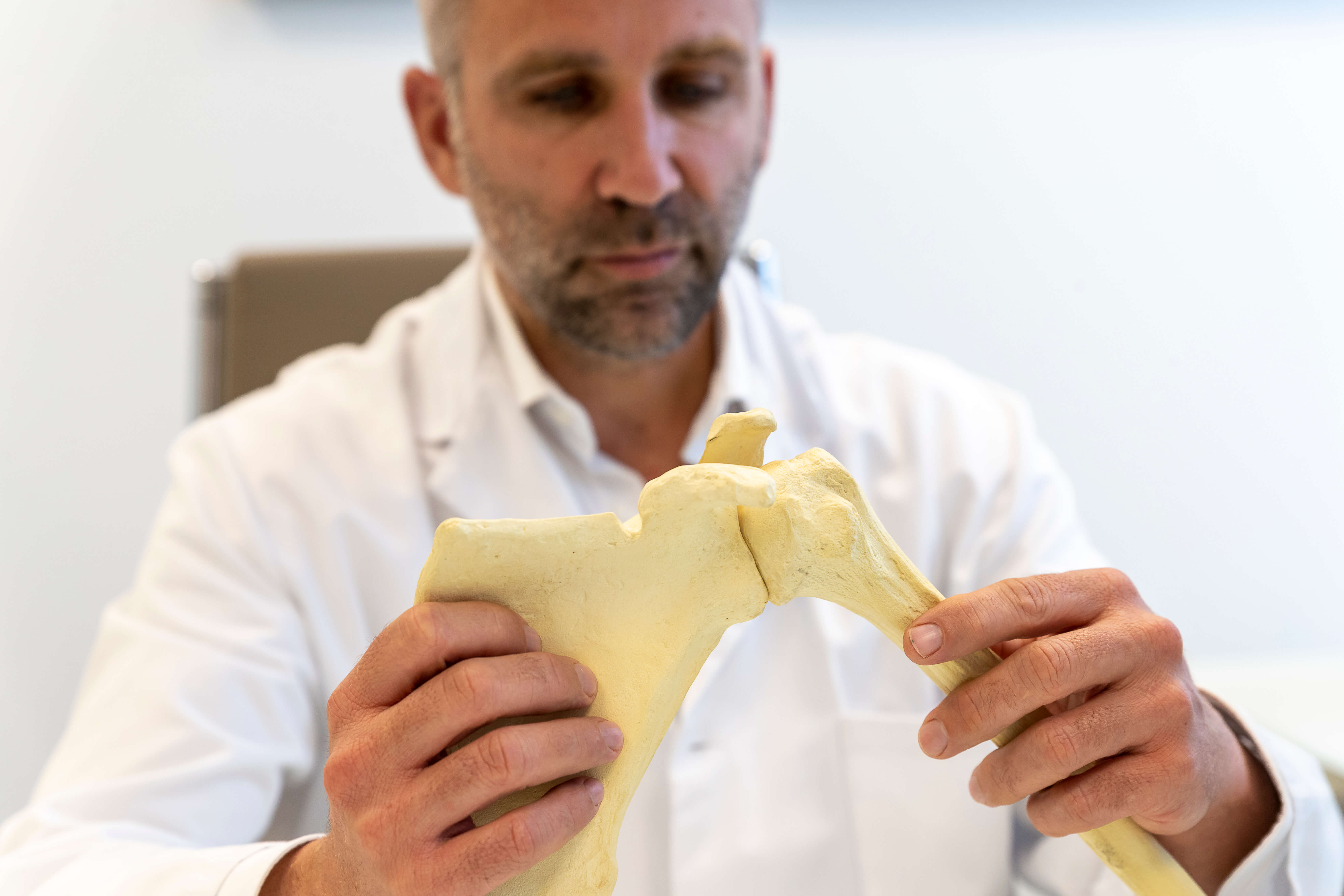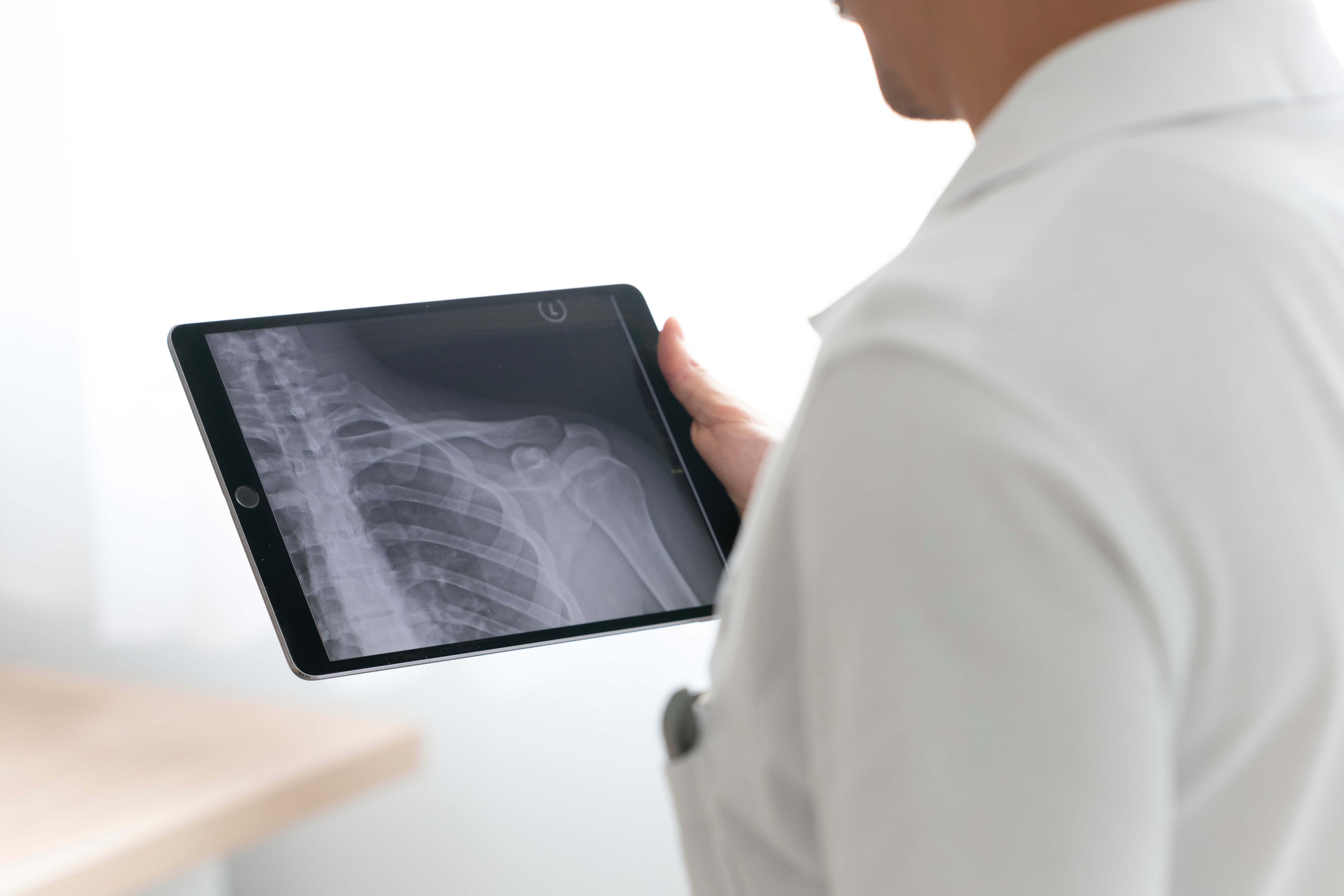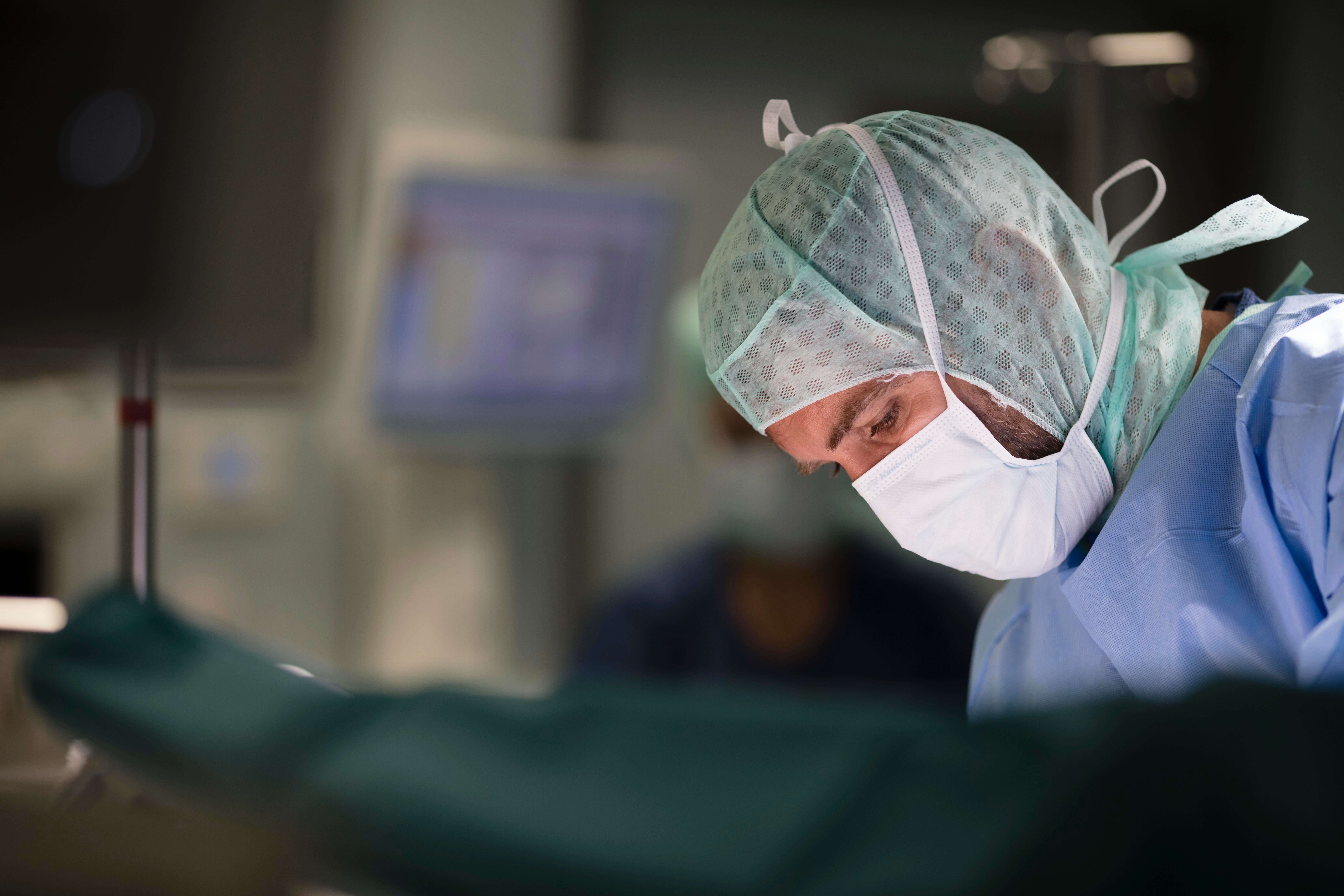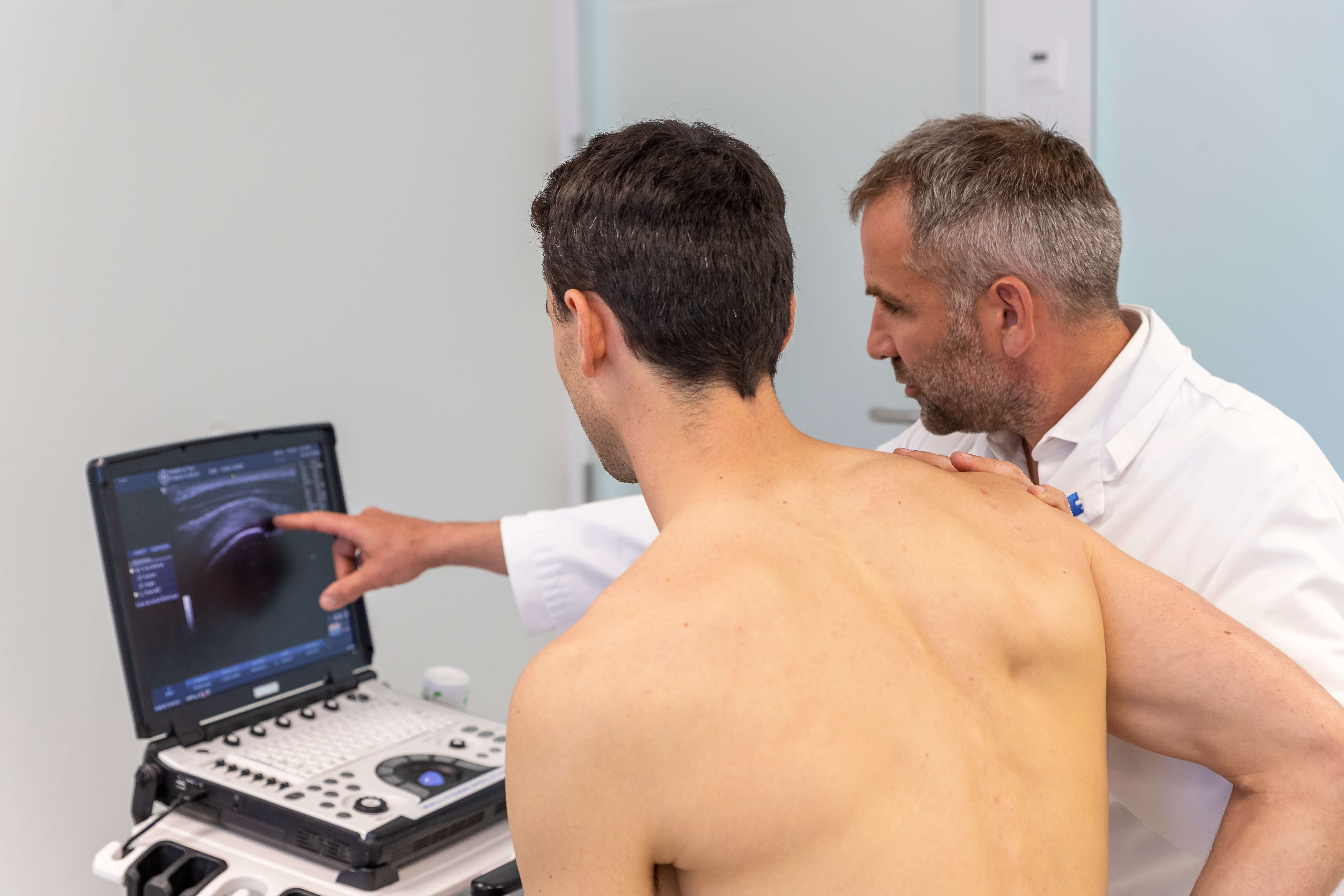Questions fréquentes sur la prothèse d'épaule.
Quand est-il nécessaire de considérer une prothèse d'épaule ?
L’implantation d’une prothèse est à envisager en cas d’échec d’un traitement conservateur bien conduit et lorsque la symptomatologie entrave de manière notable la qualité de vie.
Quelle est la différence d'indication opératoire entre une prothèse anatomique et une prothèse inversée ?
La prothèse anatomique imite l'articulation naturelle de l'épaule, tandis que la prothèse inversée est utilisée lorsque la coiffe des rotateurs est endommagée.
Combien de temps dure la récupération après l'installation d'une prothèse d'épaule ?
La période de récupération peut varier mais dure souvent plusieurs mois. Il est généralement conseillé d'éviter les activités qui sollicitent excessivement l'épaule, comme certains sports ou le port de charges lourdes, jusqu'à ce que le médecin donne son accord.
Quelle est la durée de vie d'une prothèse d'épaule ?
Les prothèses d'épaule peuvent durer 20 ans ou plus, cela varie selon l'activité du patient et d'autres facteurs individuels.
Peut-on conduire après une prothèse d'épaule ?
La conduite peut être reprise une fois que le sevrage de l’attelle a été effectué, que la douleur est gérée et qu’une mobilité suffisante de l'épaule est restaurée, souvent après quelques semaines de rééducation.






